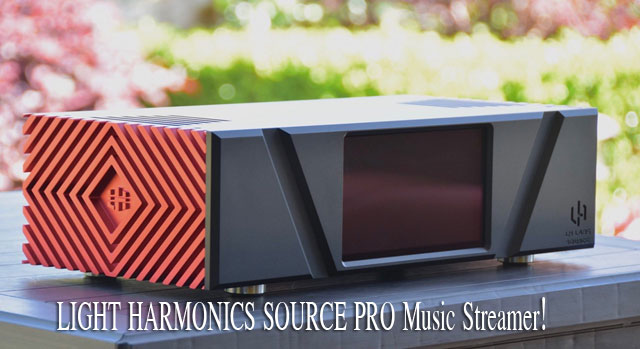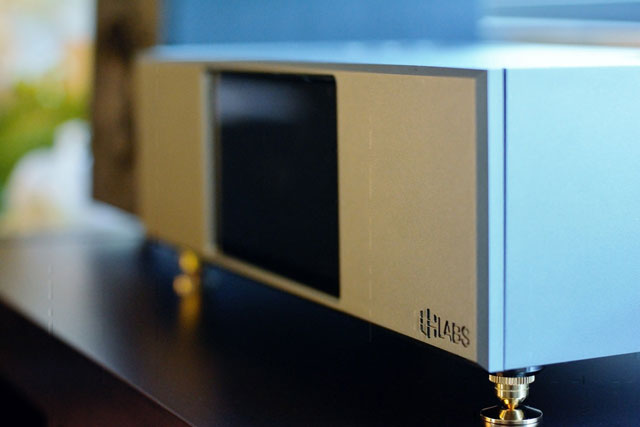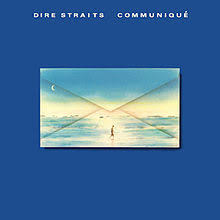LIGHT HARMONICS SOURCE PRO


As of May 2018, it is impossible to write about Light Harmonic’s products without the mention of LH Lab’scrowd funding. First and foremost, it must be remembered that the purpose of this article is to review a product, not to justify what happened, should have happened, or did not happen. However, any responsible publication should at least carry out some kind of look-back (however brief) and offer a starting position from which to launch such a product review. I will not belabor the details, since anyone interested in what previously happened can easily discern the context from a Google trawl.
A straightforward search in Indiegogo.com, even today, will still reveal a campaign for LH Labs’ “Geek Source”, a music server which is capable of playing high resolution files all the way up to 32bit 384k sampling rates, as well as DSD in all its current guises. This is the very campaign that was of much unhappiness and allegations of late delivery in LH Labs over the 2 years. It is out of my scope here to examine these issues in detail, but suffice it to say that I am reliably informed LH Labs is bending over backwards to deliver the Geek Source to its backers as promised, also Light Harmonic as a separated company is continuing contribute more monetary resource to make the delivery process faster. Source Pro is the retail version of Light Harmonic’s music server which carries a much higher price tag (around USD3000). However, Stereotimes understands that the differences are NOT merely cosmetic. (The differences including: Source Pro has Femto clocks for audio master clocks, C0G grade noise removal caps around high speed digital transfer, and new designed chassis with vibration isolation feet and WiFi Multiple Input and Multiple output MIMO capability)
It is this retail version that forms the subject of this article.

The heart of the machine is the ARM Cortex A-9 1.2G Quad Core processor. Apart from being at the cutting edge of CPU design, the A-9 chipset is claimed to reduce high frequency artifacts generated by lower-end processors, and also obviates the need for a noise-inducing fan. The design remains modular, so that if anything needs to be changed, including the motherboard, all that the user needs to do is unplug the old SOM card and pop in the new one. The Source Pro comes standard with an ultra low jitter Crystek Femto TCXO clock (two of them, to be exact), which was only available as an optional upgrade for the Geek Source. Notably, the Source Pro is fitted with four internal linear power supplies to provide juice separately for the CPU, the digital audio output, the Femto clocks, as well as other digital peripherals (eg the 7” touch screen). This extreme attention paid to providing clean power rails to different functions within the machine reduces cross-contamination of noise and eliminates the need for an external LPS. This explains why a switching mode 12V DC adaptor can power the Source Pro and you can plug straight to the wall, without compromising the sound quality in any way. The Source Pro will support all PCM files from Redbook up to and including 32/284, as well as DSD64, DSD128, DSD256 in both DoP and Native formats. All this fed from the Source Pro to the DAC via a USB 3.0 port that promises blindingly fast transmission speeds of up to 5 Gigabytes per second (apologies to those reading this in 10 years’ time, it really is fast by today’s standards). Don’t worry, USB 3.0 is backwards compatible with USB 2.0 or whatever legacy USB you’re still using. This will really come into its own when future audio formats of even higher resolution is developed. Last but not least, users of the Source Pro should be gladdened by the use of a 7” wide HiRes touch-screen display that you can switch off altogether, or set to automatically go off within a minute of non-activity. Light Harmonic claims that no other streamer on the market uses such a big touch screen display on their products.

The Source Pro is controlled primarily using any tablet or mobile phone (IOS or Android) on hand. All you need to do is to allow the Source Pro to acquire a network (by WiFi or wired), and it will automatically generate an IP address that you can read off the display and enter into your browser, and the twain should shake hands. Once that’s done, you can browse through all the tracks contained in the Source Pro and select individual tracks, or create playlists, and even organize tracks into easily accessible albums that will allow you to listen to those tracks in proper sequence as if you were listening to a physical media. It’s not all hunky dory though. Once, the Source Pro completely and inexplicably seized up on me and refused to turn itself back on again, no matter what I did. A visit from Light Harmonic’s resident tech guy revealed that the Source Pro does occasionally have problems linking up with older DACs like my Line Magnetic (see Associated Equipment below). The fix was reset the Source Pro to factory defaults (which requires the use of a blank thumb drive plugged into one of its USB ports). Operationally, I was to ensure that the streamer is paused before switching off the DAC, and the reverse applied. Once I followed this protocol, the Source Pro never hung on me again.
Light Harmonic also suggests leaving the Source Pro powered on at all times. In standby, it only draws a measly 3 watts of power, and does not get unduly warm or require additional cooling. More importantly, if you do decide to power off, you may need to re-acquire a new IP address from your router in order to allow your chosen remote control to link up with the Source Pro. If you want to avoid that hassle, just leave it on. I did, and there were no major issues.
ASSOCIATED EQUIPMENT
While the Source Pro is undoubtedly a cutting edge piece of equipment, I make no apologies for using it with a relatively prosaic DAC, namely the Line Magnetic LM-502CA which has been my system’s digital mainstay for over 2 years now. Actually, there isn’t very much that’s prosaic about the LM-502CA, which has been very well received since its introduction around 2013. The LM-502CA plays digital up to 32/192 PCM, and utilizes asynchronous USB input for lowest jitter performance. Its chipset is the ESS Sabre 9016, which is no longer SOTA admittedly, but still quite respectable. Connecting the Source Pro to the LM-502CA is the LH Labs USB Lightning cable, and the rest of the system is from the Line Magnetic vintage series ending in a pair of Voxativ Ampeggios with cabinets made by the now defunct Austrian piano company Schimmel.
SOUND QUALITY
This is not the first time I’ve dabbled with “streaming sources”. I bought an Auralic Aries Mini and a 4TB hard disk for the express purposes of ripping all my CDs and on the promise of blissful, convenient and lovely digital music at my fingertips. Alas, none of that was to be. At almost every step of the way, I encountered frustrating issues and problems that eventually led the Aries Mini and associated hard disk to be sidelined, sitting unused on the listening room floor for almost a year now. I have also been exposed to numerous streamers whenever I visit audio shows and hifi showrooms and have a fair idea of what most of them sound like, in various system configurations. So I guess you could say that I am not exactly a newbie in this area.
From the get-go, the Source Pro was able to play music that I was immediately able to relax with. This is not just a backhanded compliment– I have NEVER been able to relax with digital music of any kind before, up until now. The Source Pro has the uncanny ability to mimic analogue in what I consider one of its most important attributes, and that is in the way analogue music manages to sound real and expressive, from the first to the last note of every track. We must remember that even electronic music, with its life quantized the hell out of it, has to have been conceived from the creativity of some human being(s). In my experience, only a top-flight analogue system manages to capture that elusive human quality. On the contrary, digital (especially Redbook) might come across as impressive and alluring in the opening bars, but once the song gets going, things just start falling into a rut. It’s almost as if the musicians simply got bored and are just trying to get it over with, and can’t be bothered to put any soul and feeling into their performance anymore. Even when you go up to higher rates like 24/96, more often than not you encounter the same thing. In a nutshell, for me, that’s why digital is inferior to analogue, at any price. Even my previous digital benchmarks (Reimyo’s CDM-2 Pro top loading transport and DAP-777 DAC pairing at close to USD20k) did not match up to a humble unmodified 50-year-old Lenco L70 with its original tonearm.
So imagine my surprise when the Source Pro does not fall into this trap, even with music ripped from CD at 16/44.1, and feeding what many would consider a “low-level” DAC. Somehow, the Source Pro mimics analogue by keeping the flow of music interesting and vital. It never falls into a dazed stupor while serving up any musical offering, however familiar I am with it. This quality alone is sufficient for me to recommend the Source Pro enthusiastically as a breakthrough digital product, one that a committed vinylophile can live with as a true, musically valid source alternative.
Furthermore, the fun of being able to call up any album or track that comes to mind, within seconds, and not having to go through an entire extended ritual as you would for each precious rare LP, can be very liberating at times. You are free to concentrate on feeding your musical instincts with instantaneous gratification, and the absence of masochism demanded for the listening session makes you wonder why you abandoned the hedonistic pleasures that money can buy you nowadays. Then, once you let go of your audiophile neuroses and stop comparing the Source Pro with everything you’ve heard before, and just enjoy it for what it is, it proves to be immensely enjoyable in its own right. You will not get any digital thinness or glare, just an appealing organic flow to the music no matter the format. The Source Pro does not try so hard to impress that it shouts “Look at me!” every other second. Instead, in its own self-effacing, solidly confident manner, it simply gets out of the music’s way, letting the artistes speak for themselves through whatever medium they’ve chosen, be it a quiet piano and vocals duet (Jacintha Abisheganaden, erstwhile spouse of Dick Lee the “mad chinaman”), or a live unplugged concert in Tokyo (Whitesnake), an exotic percussion ensemble or even 80s techno courtesy of the doyens of synthesized eargasm (Kraftwerk).
Some of you will be wondering whether it is worth spending three thousand smackeroos on a digital source and how much better will it be compared to other digital sources. I would surmise that quite a lot of you would be like me – with a large collection of CDs, a “vintage” DAC that may not necessarily be equipped with DSD or DXD capability, and who would like to know whether the Source will be a viable alternative to their possibly aging CD player. I can confidently tell you that you will not regret using the Source Pro as an alternative means of serving up your 16/44.1 files ripped from your CDs. Based on comparisons with respected and dedicated CD transports into the same DAC, using the same files (same mastering, same label, same CD etc), I am able to determine that the Source Pro will happily give you all the pleasure that you get from spinning discs, none of the hassle of having to faff around with jewel cases and physical media, but at the same time, in the knowledge that every bit that goes into the Source is faithfully and more than competently reproduced, afford you a new level of contentment for each listening session.

Before I leave the sound quality discussion, I must also record my pleasure of listening to higher resolution tracks, such as those at 24/96, through the streamer. The specific track – “Communique” by Dire Straits – proves that the Source Pro starts to show its mettle when fed with ever higher quality data. Here, the soundstage widened considerably, and the impact of the bass drum almost threw me off my chair. But in the midst of this, the Source was able to preserve the delicate nuances of Knopfler’s voice, showing that it is not just all flash but no substance. At these higher resolutions, the music just took on a new level of naturalness and ease of flow.
Due to publication deadlines, I had no opportunity to try the Source Pro with a DSD-capable DAC. However, based on my experiences with it thus far, I would bet my bottom dollar that it will only improve as sampling rates go north. Yes, the Source Pro is that capable and I have that much faith in it. Perhaps in a future review of a Light Harmonic DAC (coming soon), I will have the opportunity to plug this gap. Watch this space!
Conclusion
If you are looking to jump onto the digital streaming bandwagon, but want a source that does not make too many technical demands on you, is relatively fool-proof to use, and just allows you to sit back and listen to the music, not musical pyrotechnics, but yet does not cost the earth, then you really owe it to yourself to put the Light Harmonic Source Pro on your shortlist. It will play your Redbook CDs more than competently, your high res files effortlessly, and simplify your listening sessions no end. Larry and his team remain a viable, sincere and music-loving group of audiophiles producing products based on solid and innovative engineering. Writing them and their products off based on the Indiegogo misadventures would be a mistake. And yes, no digital streamer is without its idiosyncrasies and you will need some time to figure out how to use it. But once you do, you might actually wonder how you managed to do without it all this while.

Stephen Yan
Specifications:
Price: $3,000.00
This Source Pro comes with a built in 5TB hard drive for the storage.
Built in Double Phase Re-Clock Jitter Elimination circuit for all output digital circuits. Every digital output is precisely timed making it the perfect fit for any system that has a dedicated DAC.
Source Pro is a high-resolution music playing specialist. Looking to play FLAC, ALAC, AIFF, MP3, DSD, DSD2, DSD4 and PCM 44.1K, 48K, 88.2K, 96K, 178.4K, 192K, 356.8k 384K Geek Source handles it all.
Dedicated USB 3.0 audio port output with a noise free power supply. This isn’t your Grandpa’s PC or MAC music server. Geek Source is a super high-speed playback machine.
Source Pro has an external power supply, keeping the bad noise at bay while letting the good noise (your tasty tunes) in.
Industry leading USB 3.0 output HD music server Triple Femto Clocks
In the design, we put Femto clocks for all the SPIDE/AES audio outputs. One is for 44.1K band sampling rate (44.1K/88.2K/176.4K) and the other is for 48K band sampling rate (48K/96K/192K).
Another Femto a level clock is dedicated to USB 3.0 interfaces alone. This will reduce the USB audio output signal jitter even lower which translated into a much more stable sound stage and natural music when you use your USB DAC.
Unique Dual Power Design
Larry designed a complex power supply star system for the whole Source Pro board. From the beginning of power input, we have TWO separated 12V DC input sockets. One dedicated to audio related circuit, if you have a Linear power supply, that is the place you should plug-in. It will use its Super Quiet Linear Power to power up the master audio clocks (Femto clocks), USB 3.0 output part, and digital clocks transmission IC.
The other socket provides the power for the rest, including CPU, WiFi, Hard drive, and our 5” touch screen.
For your convenience, if you want to plug-in one power only. That is no problem. The main power socket will automatic power up the audio power socket if there is no audio power plug-in.
Roon and Tidal support in software in the upcoming firmware update.
Website: http://lightharmonic.com/source-pro-music-server/
One thought on "LIGHT HARMONICS SOURCE PRO"
Leave a Reply
Stereo Times Masthead
Publisher/Founder
Clement Perry
Editor
Dave Thomas
Senior Editors
Frank Alles, Mike Girardi, Russell Lichter, Terry London, Moreno Mitchell, Paul Szabady, Bill Wells, Mike Wright, and Stephen Yan,
Current Contributors
David Abramson, Tim Barrall, Dave Allison, Ron Cook, Lewis Dardick, John Hoffman, Dan Secula, Don Shaulis, Greg Simmons, Eric Teh, Greg Voth, Richard Willie, Ed Van Winkle, Rob Dockery, Richard Doran, and Daveed Turek
Site Management Clement Perry
Ad Designer: Martin Perry





Dear Mr. Yang,
Just for the fun of it. As we really owe it to ourself to put this fantastic machine on the shortlist. While LH labs is bending over backwards to deliver on the crowdfunding perks.
Do you happen to have any idea when one can expect said units to arrive at the people who paid for the development work? I mean just because your are reliably informed. Oh, and because we might hit the decade on being late soon.
Best and keep on with well informed reviews